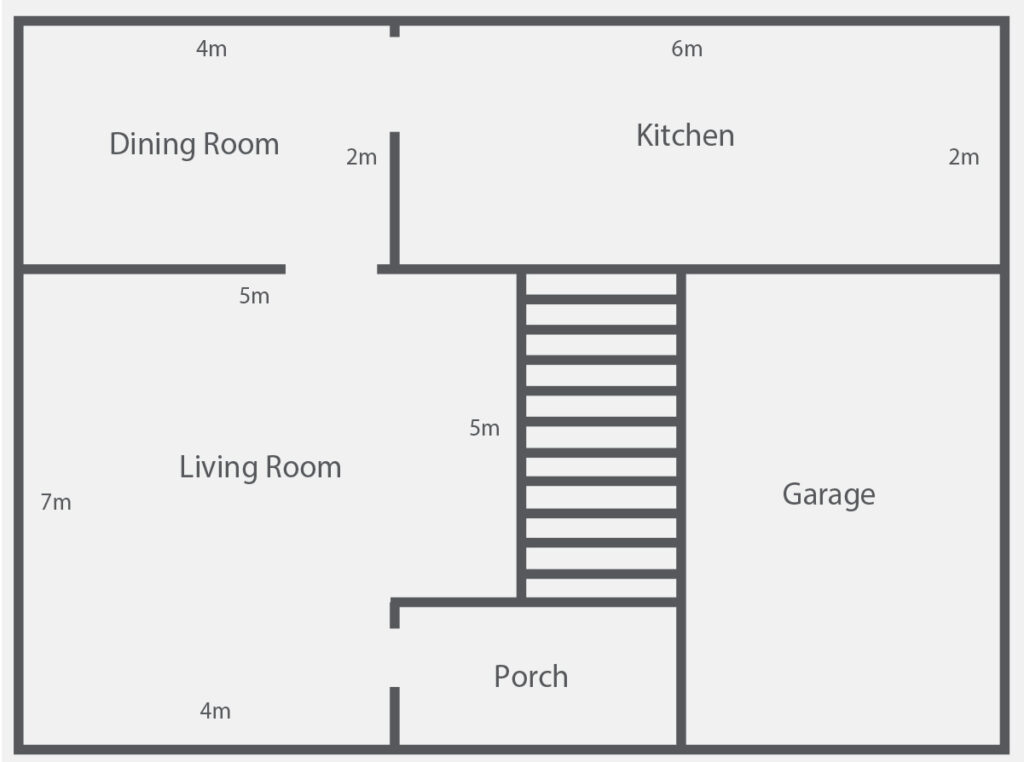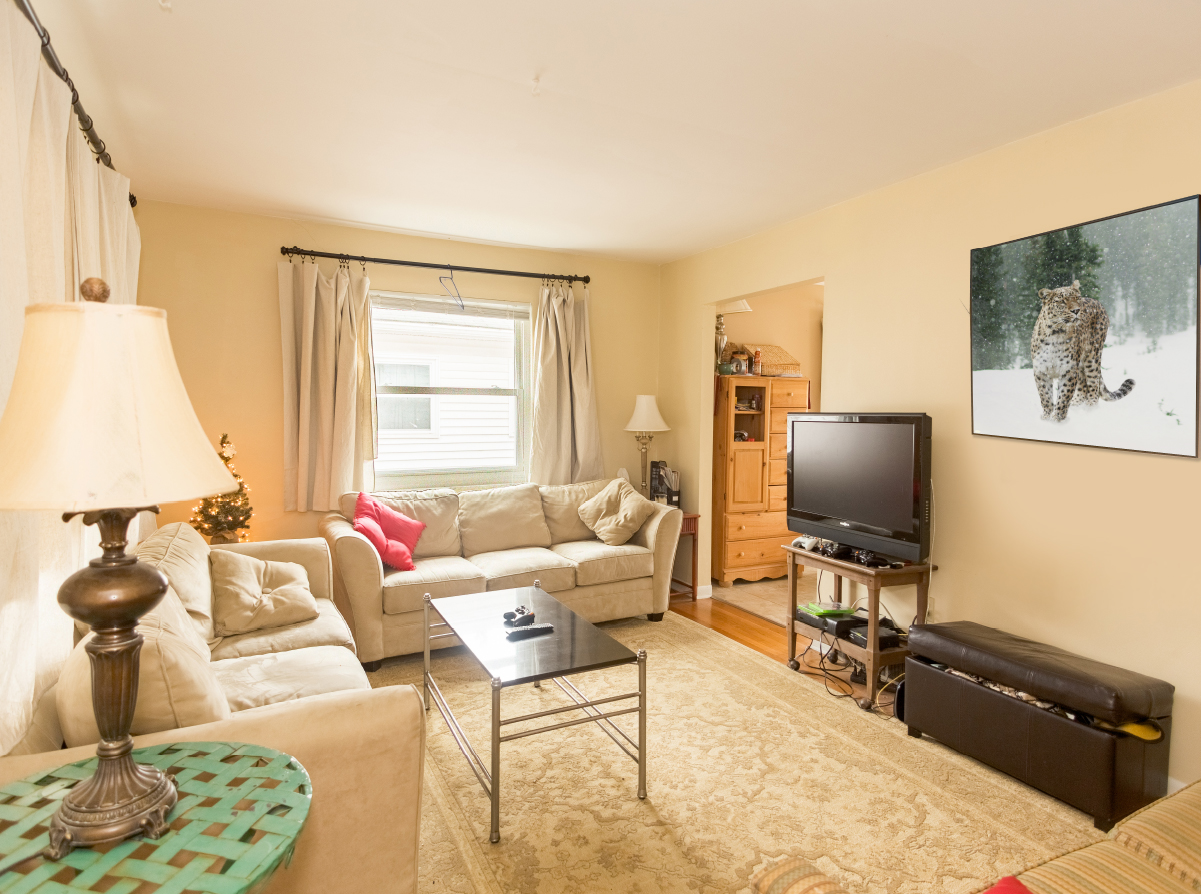Case Study 01
Here's how the owner of this home saved £3,243.24 a year on their heating bills by switching to infrared heating.
Below you’ll find the floor plan for the downstairs area of a very well insulated home.


Taking these measurements into account, as well as the 2.5m high ceiling, we can calculate the required wattage for each room as the following:
| Room | Volume (m3) | Equivalent Surface Area (m2) | Required Infrared Wattage (W) |
|---|---|---|---|
| Living Room | 82.5(m3) | 33(m2) | 1650(W) |
| Dining Room | 20(m3) | 8(m2) | 400W(W) |
| Kitchen | 30m(m3) | 12(m2) | 600W(W) |
This means we can use a 900W panel and a 700W panel in the living room, a 350W panel in the dining room, and a 600W panel in the kitchen. With an average daily use of 5.5 hours, and a maximum price of 36p per kWh, the cost of running Infrared Panels downstairs for a year comes to the following:
| Room | Yearly Power Consumption (kWh) | Cost (£)) |
|---|---|---|
| Living Room | 3363.36kWh | £1,210.81 |
| Dining Room | 720.72kWh | £259.46 |
| Kitchen | 1201.2kWh | £432.43 |
These figures are likely to be higher than normal, as the heaters probably won’t be on during summer. Doing the same for electric convection heaters gives us the following costs:
| Room | Yearly Power Consumption (kWh) | Required Convection Wattage (W) | Volume (m3) | Cost (£)) |
|---|---|---|---|---|
| Living Room | 7567.56kWh | 3780W | 82.5m(3) | £2,742.32 |
| Dining Room | 2682.68kWh | 1340W | 20m(3) | £965.76 |
| Kitchen | 4044.04kWh | 2020W | 30m(3) | £1,455.85 |

